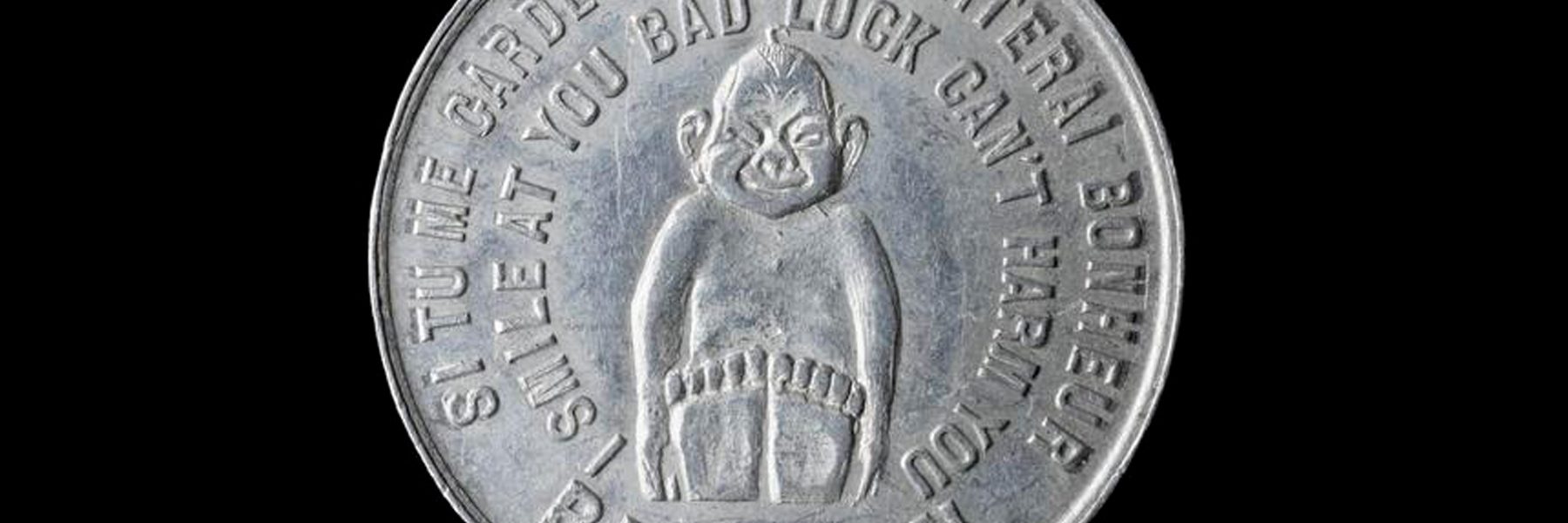Which objects pop into your mind when you hear the word ‘amulet’? A four-leafed clover, an evil eye you got on holiday, or a lucky pair of pants?

Whether you have your own personal amulet or not, it might come as a surprise to you that the Science Museum Group has thousands of them in its collection. Amulets even have their own section in Medicine: The Wellcome Galleries, which opened last November. But what do they have to do with health and illness?

To many people these days, amulets might be something you carry with you because you’re a little superstitious, or, maybe they make you feel safer. Yet, a few hundred years ago, amulets were a legitimate part of medicine. Indeed, in the early modern period (around 1500-1750) amulets were objects used to heal or protect a body or home. They could be made from a huge range of materials be that natural or humanmade, and often worked in ways that were not fully understood.
The amulets on display in Medicine, help show us just how diverse healing used to be. Today, we mainly focus on curing illnesses once we’re sick but hundreds of years ago in England, medicine was much more about preventing illness and misfortune, as well as restoring health. Amulets played a significant part in this maintenance of a healthy body and mind.

A great example of this is that Samuel Pepys, the Member of Parliament and early modern diarist famous for recording his account of the Great Fire of London in 1666, carried with him an object we may immediately recognise as an amulet – a hare’s foot. But contrary to popular belief, Pepys didn’t see his hare’s foot as a lucky object, or as something that might ward off illness. Rather, a colleague at Westminster recommended the method of carrying a hare’s foot as a means to cure Pepys’s painful colic.
Have you woken up in the middle of the night, unable to move a muscle? Well, four hundred years ago, the ‘nightmare’ was a well-known concept that we might refer to today as sleep paralysis, and, like us, people in the past wanted to prevent this terrifying experience. To do so, they would hang up naturally-holed stones beside their beds. As a result of their rarity and uniqueness, these objects were seen as a powerful facet of nature that would drive the nightmares from their beds.

Objects like these, which were well-known and widely used in early modern English medicine, are often labelled as amulets in museum collections today. Their connection with what we recognise as healing might not be immediately obvious, because over time, amulets became disassociated from medicine, and were often linked with good fortune and averting evil.
But researching amulets can reveal a wealth of information about health and illness in the past. They show us that medicine has a rich, complex and ever-evolving history, one in which these objects played a real, potent part.

So, next time you’re clearing out your drawers, have a look at the objects you’ve kept and think about what they signify to you. While you may not think they can truly protect you from danger or heal your ailments, amulets will always have the power to tell us more about the human experience.
For further explanation, see Annie Thwaite ‘A History of Amulets in Ten Objects’ or read more about amulets here ‘5 amulets for 5 senses’.
Book your free tickets and plan a visit to the Medicine: The Wellcome Galleries this summer.
